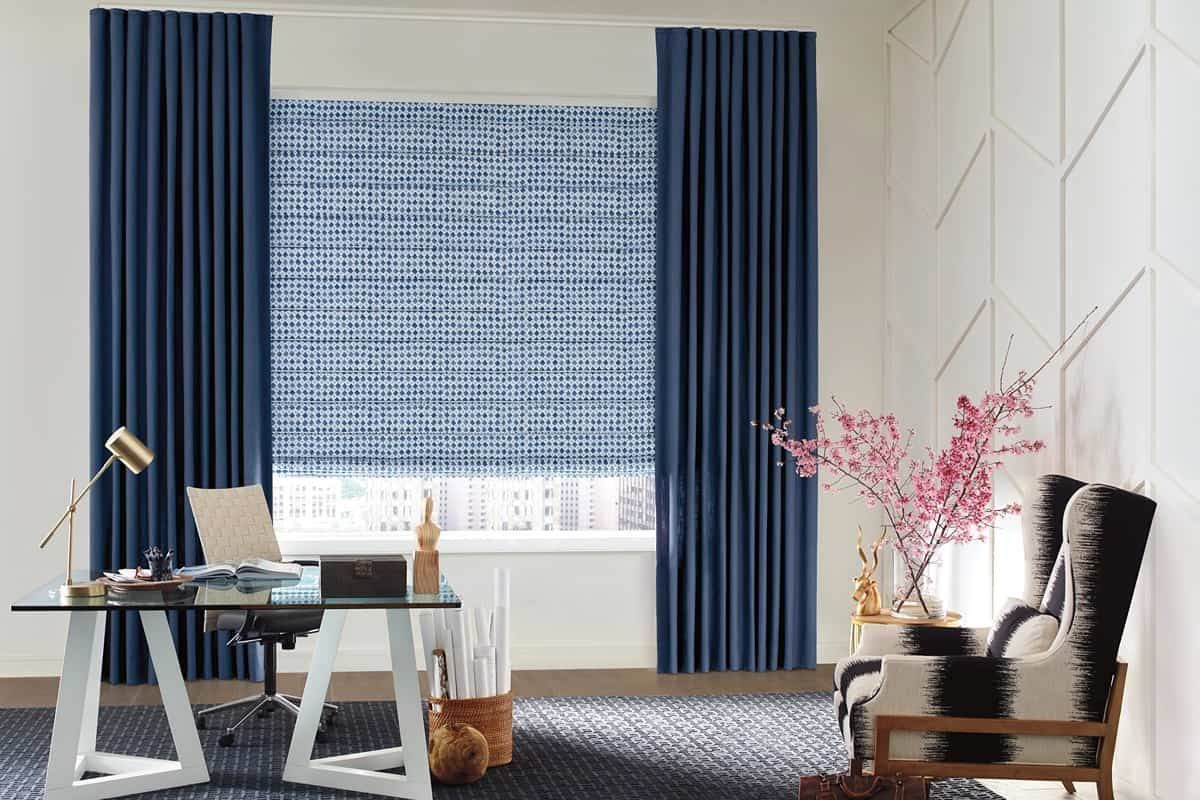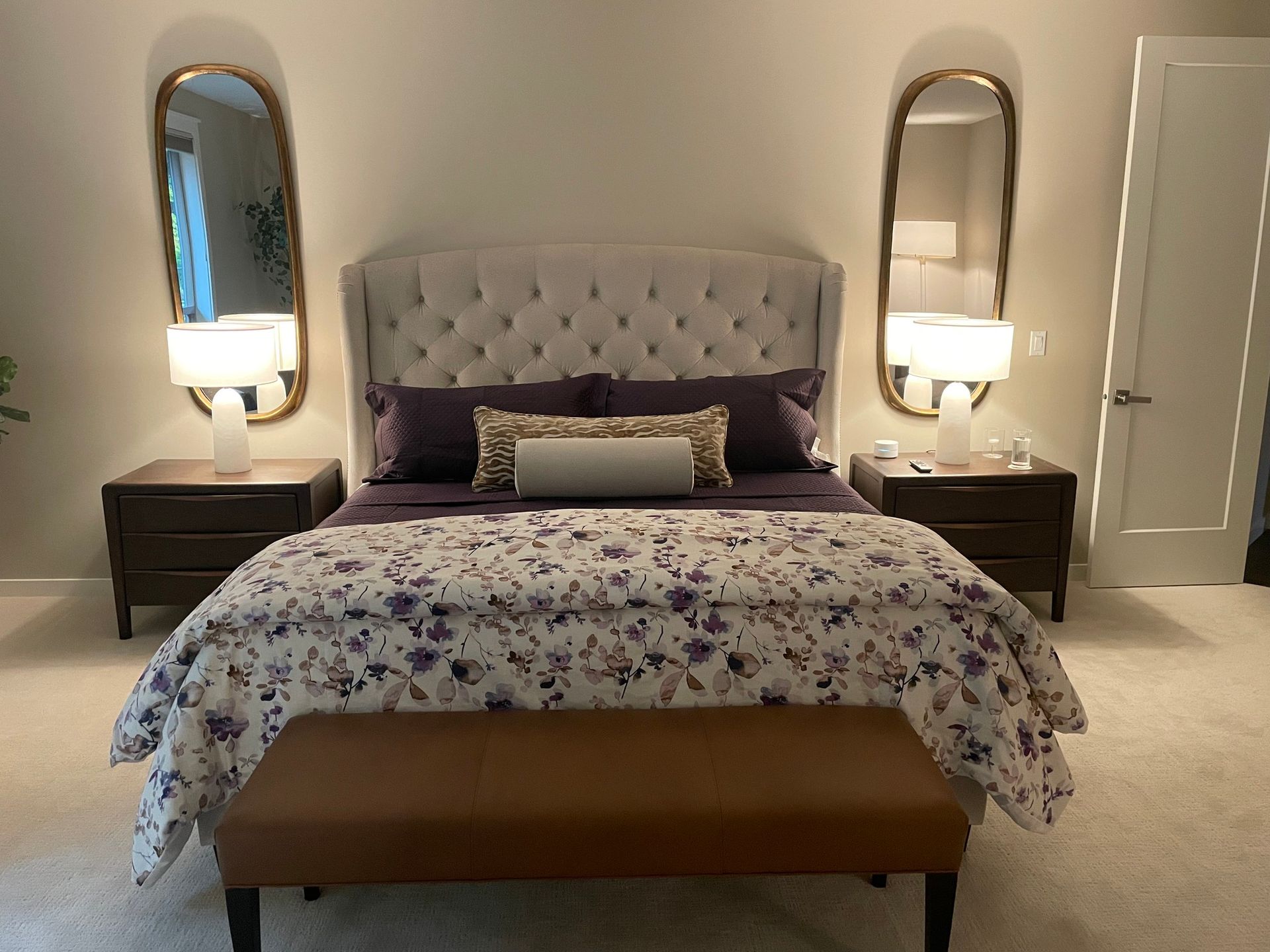4 Things About Floral Fabric Shades from Hunter Douglas
Nature has continued to stimulate the minds of people for generations, and with the summer sun comes all kinds of gorgeous flowers to soak it up and provide us with truly stunning colors and patterns. For modern textile designers, flowers and other beautiful blooms offer a world of inspiration, and using their creative flare for design, they create one-of-a-kind prints and patterns for botanical and floral fabric shades.
Botanical vs. Floral
Looking at the modern use of flowers for inspiration, the resulting fabric styles can be split into botanicals and florals. Florals focus on the bloom itself, while botanicals are inspired by the entirety of the plant and tend to include the stems, leaves, and roots of the plants in the color palette.
Designer Botanical Prints
- Tangle: Designed by Seema Krish, the variegated embroidery on Tangle climbs the fabric like a vine, which also happens to be the inspiration for this botanical print.
- Woodlands: Woodlands is one of Seema Krish's incredible embroideries, inspired by the trees in the natural landscape, capturing their raw texture with multi-dimensional color play.
- Laurel: Laurel by Marie Bronkar takes botanical inspiration from a piece of pottery the artist saw in Mexico City, bringing the floral pattern to life with subtle color work.
- Tree of Life: The Tree of Life print by Rebecca Atwood was inspired by fruit trees in Portugal that the textile artist saw and translated into a modern botanical print. She uses a watercolor drawing technique to soften linear elements into smooth and continuous forms.
- Dotted Leaf: Using dots and line work Rebecca Atwood built an organic pattern inspired by the outline of a leaf in her designer fabric.
- Field: A neutral yet engaging backdrop reminiscent of stalks in the field achieved through the expert brushwork of Rebecca Atwood.
Designer Floral Prints
- Grand Fleur: Using embroidery techniques, Marcie Bronkar interpreted a 17th-century Venetian vestment and shawled it into the floral fabric with strong linear work.
- Menagerie: A modern interpretation by Marcie Bronkar of a classic English floral textile design prevalent during the 17th century reimagined with bold color and strong line work.
- Lily: Using a custom watercolor and pencil technique, Marci Bronkar creates a soft, flowing floral pattern that seemingly floats on the fabric with a gentle touch and peaceful feel.
- Floral Stamp: A floral pattern designed by Rebecca Atwood using an organic hand-stamping process to mimic the look of petals scattered on a sidewalk.
Choosing the Right Floral Fabric Shade
Here are some things to consider when choosing the right floral fabric shade for your home:
- Light Control: Consider how much light control you need in the room. Hunter Douglas offers a variety of shade opacities, from sheer to blackout, that can be paired with your chosen floral or botanical fabric.
- Style and Scale: Think about the overall style of your room and choose a floral print that complements it. For smaller spaces, a smaller scale floral pattern might be more suitable, while a larger room can handle a bolder, more dramatic floral design.
- Fabric Type: Hunter Douglas offers a variety of fabrics for their shades, including linen, cotton, and synthetics. Consider the light filtering properties, durability, and cleaning needs of the fabric when making your selection.
Benefits of Floral Fabric Shades
Beyond aesthetics, there are several benefits to choosing floral fabric shades for your home:
- Softens the Space: Floral patterns can add a touch of softness and femininity to a room, making it feel more inviting and comfortable.
- Creates a Focal Point: A well-chosen floral fabric shade can become a focal point in a room, adding visual interest and personality.
Connects with Nature: Bringing the outdoors in is a popular design trend, and floral fabric shades are a great way to do this.
Floral Fabric Shades by Hunter Douglas
Find designer floral and botanical prints by Rebecca Atwood, Marcie Bronkar, and Seema Krish in the Design Studio™ collection from Hunter Douglas. This exclusive suite of fabrics can be used to create a variety of floral fabric shades, including Design Studio Roman Shades. In addition to Roman Shades, full drapery, custom side panels, and roller shades are alternative window treatment styles that can be fabricated with Design Studio botanical or floral prints for nature-inspired floral fabric shades.
Ask the team at Pugerudes about the latest botanical prints and floral fabric shades for your home. Pugerudes carries the complete line of Hunter Douglas products, including the exclusive Design Studio collection. Request a consultation online or visit the showroom located near Kent, Washington. Pugerudes serves in western Washington, Maple Valley, Kent, Auburn, Federal Way, Renton, Black Diamond, Newcastle, Burien, Enumclaw, Covington, and Des Moines.





